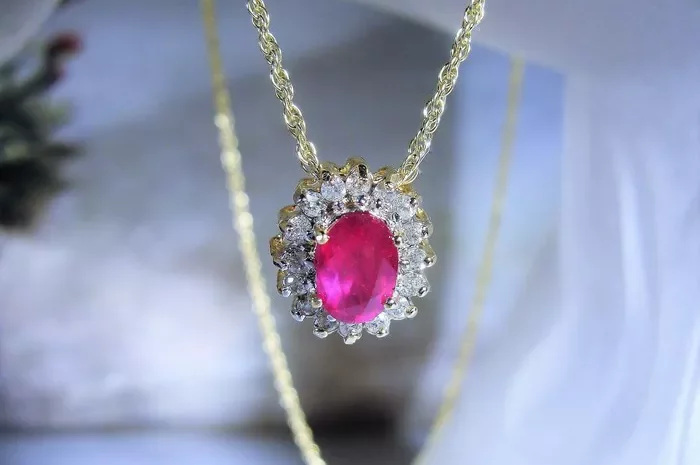Madagascar rubies have gained immense popularity in the gemstone market due to their striking color and quality. These rubies, primarily sourced from the Andilamena region, are known for their vivid red hues and remarkable clarity. However, distinguishing Madagascar rubies from other rubies, particularly those from Myanmar (Burma) and Thailand, requires a keen understanding of their unique characteristics. This article aims to provide a comprehensive guide on how to identify Madagascar rubies, focusing on their physical properties, optical features, and common treatments.
Understanding Ruby Characteristics
Physical Properties of Rubies
Rubies are a variety of corundum, a mineral composed of aluminum oxide. The red color of rubies is primarily due to the presence of chromium. The following physical properties are crucial for identifying rubies:
Hardness: Rubies score 9 on the Mohs scale, making them one of the hardest gemstones. This hardness is a key indicator when testing for authenticity.
Specific Gravity: The specific gravity of rubies ranges from 3.95 to 4.05. This can be measured using a hydrostatic balance.
Refractive Index: Rubies have a refractive index of approximately 1.76 to 1.77. This property can be tested using a refractometer.
Optical Features
Madagascar rubies exhibit distinct optical characteristics that can help in their identification:
Color: The most notable feature of Madagascar rubies is their vibrant red color, often described as “pigeon blood” red. This term refers to a pure, vivid red hue with a slight hint of blue.
Pleochroism: Rubies can show different colors when viewed from different angles. Madagascar rubies may exhibit a slight pleochroism, showing deeper red or purplish tones.
Inclusions: Natural rubies often contain inclusions, which can be used to identify their origin. Madagascar rubies may have needle-like inclusions known as “silk,” which can enhance their color and brilliance.
Identifying Madagascar Rubies
Visual Inspection
The first step in identifying Madagascar rubies is a thorough visual inspection:
Color Saturation: Madagascar rubies typically exhibit a strong color saturation. Look for a uniform color throughout the stone without zoning or color banding.
Clarity: High-quality Madagascar rubies have fewer inclusions compared to those from other regions. However, some inclusions are acceptable and can add character to the stone.
Cut Quality: The cut of the ruby affects its brilliance. Madagascar rubies are often well-cut, enhancing their visual appeal. Look for symmetrical facets and a well-proportioned shape.
See Also: The Beauty of Real Ruby Stud Earrings
Use of Gemological Tools
To accurately identify Madagascar rubies, gemologists use various tools:
Loupe: A 10x loupe can help examine inclusions and surface characteristics. Look for the presence of silk and other inclusions typical of Madagascar rubies.
Refractometer: This tool measures the refractive index. A reading of 1.76 to 1.77 confirms the stone as a ruby.
Spectroscope: A spectroscope can analyze the light absorption spectrum of the ruby. Madagascar rubies typically show strong absorption lines in the red region, indicating chromium presence.
Advanced Testing Methods
For more precise identification, advanced testing methods can be employed:
UV Light Test: Under UV light, Madagascar rubies may exhibit a strong red fluorescence due to their chromium content. This can help differentiate them from synthetic rubies.
Thermal Conductivity Tester: This device measures the thermal conductivity of the stone. Rubies have high thermal conductivity, which can confirm their authenticity.
Common Treatments of Madagascar Rubies
It is essential to be aware of the treatments that rubies undergo, as these can affect their value and identification:
Heat Treatment
Most rubies, including those from Madagascar, undergo heat treatment to enhance their color and clarity. This process is generally accepted in the industry, but it is crucial to disclose this treatment when selling or purchasing rubies.
Glass Filling
Some rubies are treated with glass filling to improve clarity. This treatment can be identified by looking for bubbles or a glass-like appearance within the stone. Madagascar rubies typically do not exhibit these characteristics, making them more desirable.
Conclusion
Identifying Madagascar rubies requires a combination of visual inspection, gemological tools, and an understanding of their unique characteristics. By examining the color, clarity, and inclusions, along with utilizing tools like a loupe, refractometer, and spectroscope, gemologists can accurately determine the authenticity and origin of these stunning gemstones. Awareness of common treatments is also essential, as it impacts the value and desirability of Madagascar rubies. With this knowledge, both gemologists and enthusiasts can confidently appreciate the beauty and rarity of Madagascar rubies in the world of gemstones.


